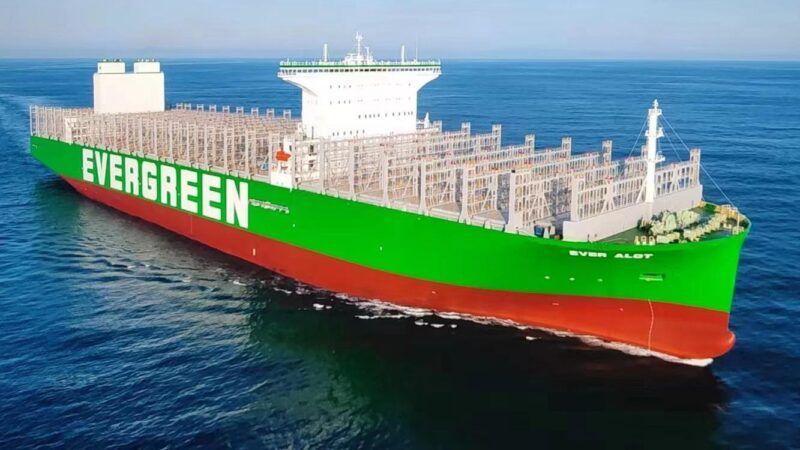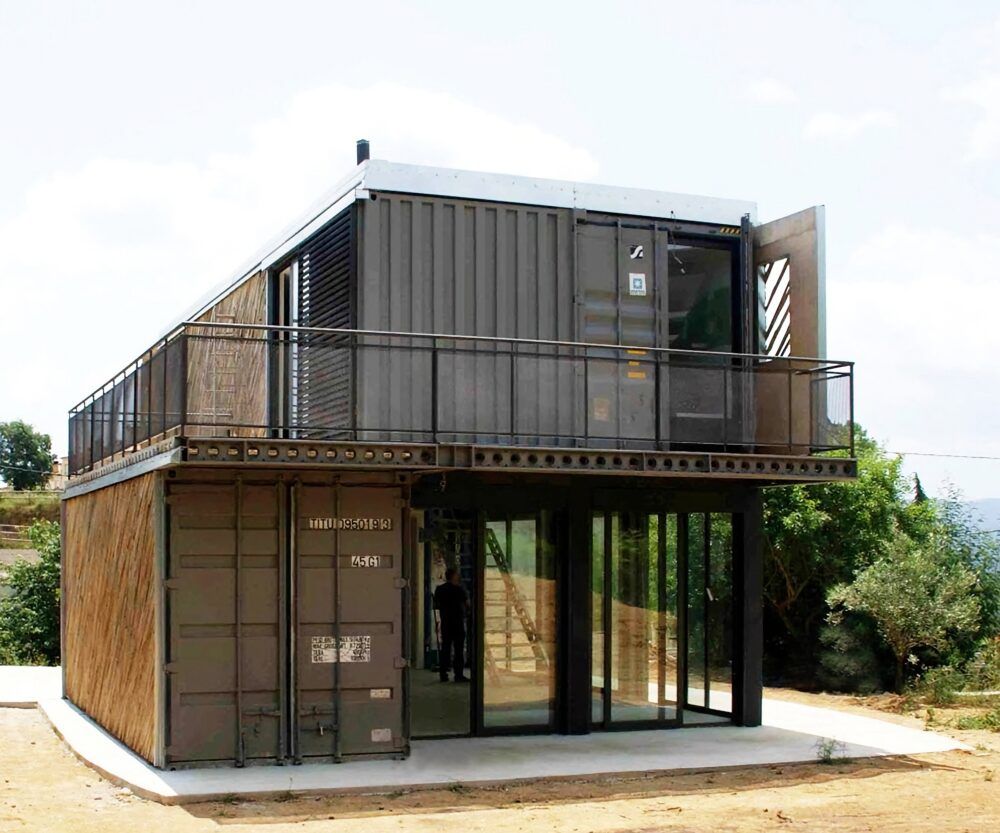 Containers are suitable to be used as structural material in different architectural typologies, as in this project in Caldes de Montbuí (Straddle3).
Containers are suitable to be used as structural material in different architectural typologies, as in this project in Caldes de Montbuí (Straddle3).
Architecture, a second life for containers
The lifespan of a container is about ten years. After this time, the movement and the inclemencies it suffers on land and sea lead to its retirement, but its functionality and hardness increasingly ensure it a second life for other activities. For example, architecture.
 Containers are suitable to be used as structural material in different architectural typologies, as in this project in Caldes de Montbuí (Straddle3).
Containers are suitable to be used as structural material in different architectural typologies, as in this project in Caldes de Montbuí (Straddle3).
Millions of containers remain on land each year. According to Container FAQ, of the 17 million containers transported annually, only six million are used for the transport or storage of goods.
This means that eleven million are completely idle and unused when, although they may have exhausted their original function, they can be put to various uses, including architectural ones.
Physical characteristics of containers
It may seem new, but the Straddle3 architecture studio has been working with second- and third-hand containers since 2007-2008. As architect David Juárez explains, the qualities of Corten steel, the material of which they are made, offer, among other virtues, great resistance to corrosion.
"Structurally, it is a material designed to support very high loads, up to almost 40 tonnes, it is very efficient in its performance and it is also economical", Juárez points out. The price of a second or third-hand container, once its original use has been discarded, is around 3,500 euros.
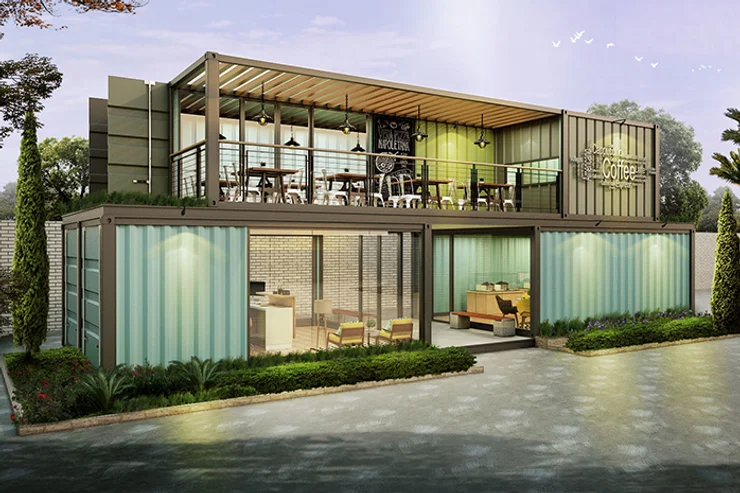
The predetermined shape and measurements of the container (12.19 metres long x 2.44 metres wide x 2.59 metres high and 27m2) can be a limitation, although the architect explains that the most common practice is to cut them and adapt them to the needs of the project.
But Straddle3 is not alone. For example, the New York office Lot-Ek has been working with shipping containers for 25 years, taking them to unsuspected limits.
Modular architecture with containers
The use of containers as a construction element would fall within the so-called modular architecture, a system that optimises construction processes in terms of economy, speed of execution, reversibility, adaptability to different technical code requirements and environmental sustainability, recycling and upscaling.
"It depends on the architectural programme, the technical capabilities of the design and how bold you can be in manipulating and reinforcing it. This will determine whether it can be used for housing or facilities with greater or lesser success," Juárez shares.
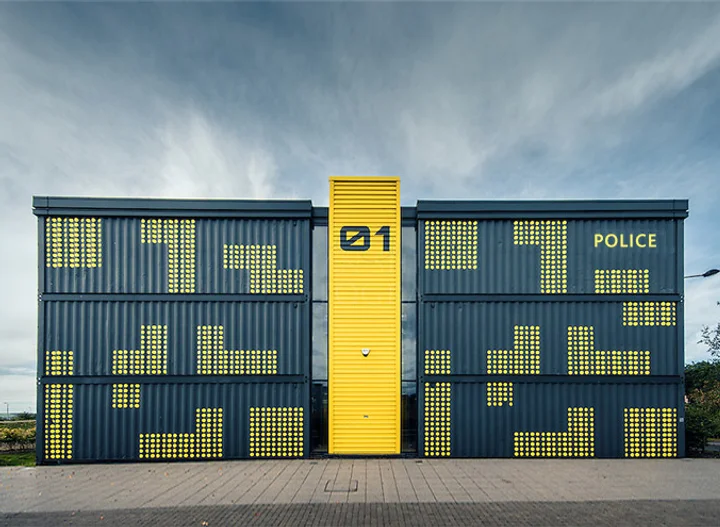
Preparing the container for construction
Once sanitised, the container must go through several processes to prepare it for use in, for example, a house, which are not too different from the steps that must be followed in a traditional construction.
"The first thing is to be sure about its final geometry because it will determine whether we have to open windows or doors and interior connections for installations or telecommunications. Making these perforations means reinforcing the container because the material weakens," he explains.
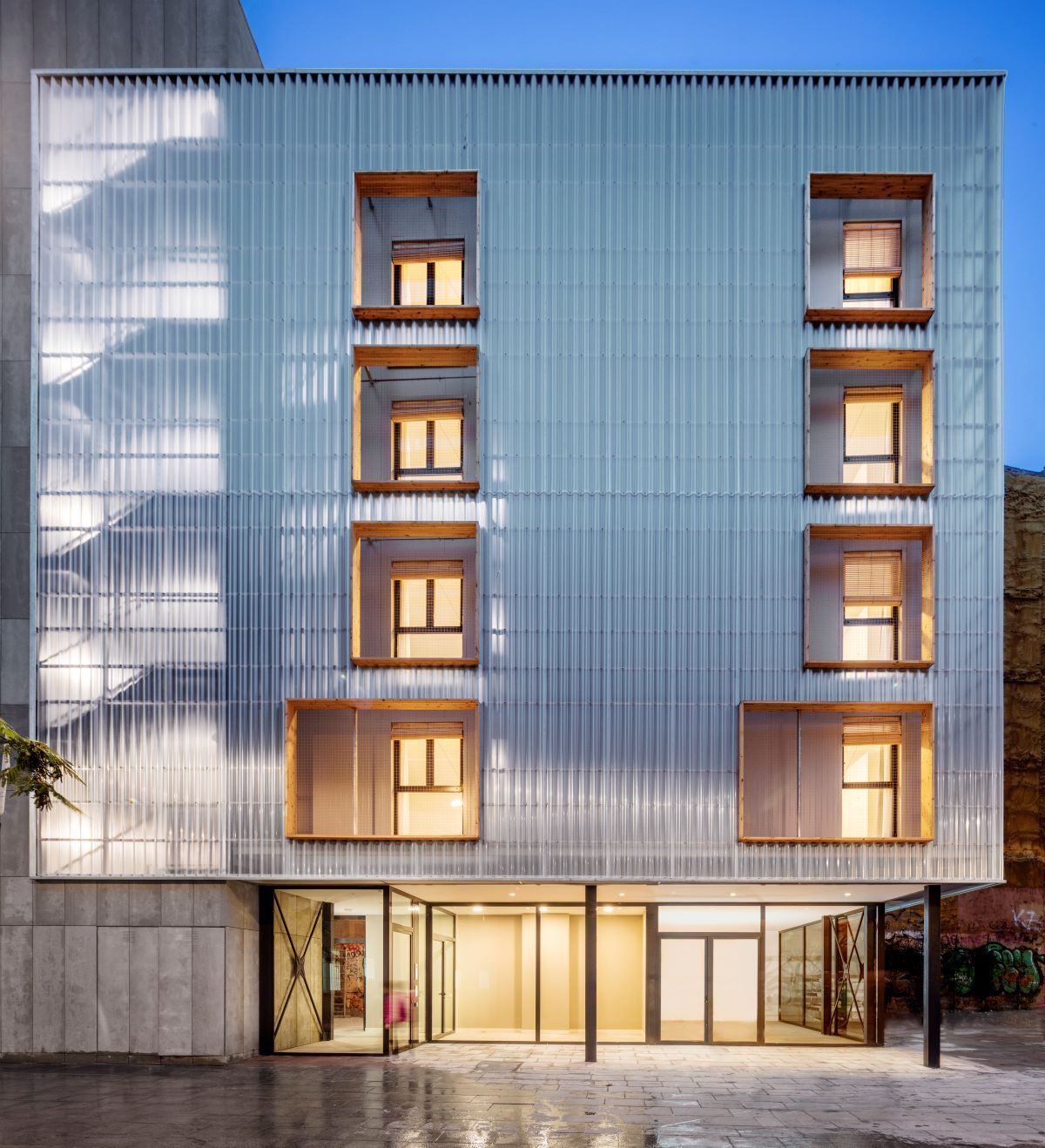
Once the structural model obtained with calculation programmes is established, the weakened parts are strengthened with reinforcing frames so that the material recovers rigidity and strength and to be able to comply with the Technical Building Code.
"When you work with modular architecture, you usually prefabricate in the workshop and assemble on the site. You have to consider not only the static loads that the material must withstand, but also the dynamic loads resulting from its transport and subsequent handling," he says.
This process shortens construction times, because it allows you to work on the material on the one hand and prepare the site (foundations, connections) in parallel.
Corten steel, the material from which containers are made, is structurally designed to withstand very high loads, up to almost 40 tonnes
Containers in the construction industry: temporary or permanent use
In the first quarter of this year, Straddle3 completed a 3-storey building with 8 flats for young people in Caldes de Montbui, Barcelona, where more than 50% of the structure is made of containers and the rest of the structure is made of wooden slabs.
They have also used it, among other projects, in a skatepark, where it served as a support for land and ramps.
The studio is also responsible for APROP (Provisional Proximity Housing), which uses recycled shipping containers to build temporary housing in response to the housing emergency in the city of Barcelona.
Both are examples of the permanent and temporary nature that containers can have when used in architecture. "What determines it is often their reversible character, which is why they are housing and not dwellings that are designed to be dismantled and reconfigured in another place when the situation requires it," he explains.
This feature is also present in sports facilities such as the 974 Stadium in Doha, one of the venues of the last World Cup in Qatar. Its modular design incorporated 974 containers used to house the stadium's services. Once dismantled, the intention is that it will be used for the same purpose in another geography or divided into smaller units for other uses.
Art, pools and even a cricket farm
The dimensions and qualities of the containers are also very useful for other uses:
- Pools
Companies such as Cube Pools convert and prepare containers with all the necessary elements for use such as pre-installation of filters.
- Art and sculptures
Containers are also used to create artworks and sculptures, as they can be used as a blank canvas or stacked and manipulated in different ways to create surprising shapes. - Hotels
Containers admit other architectural typologies and hotels are no exception. There are examples of luxury or sustainable hotels designed with containers in Mexico, Japan, the USA and the Czech Republic. - Cricket farm
Finally, a more unusual case is the use of containers to house cricket farms for the production of cricket meal. There are at least two examples in Spain, Nutrinsect and Origens Farm.
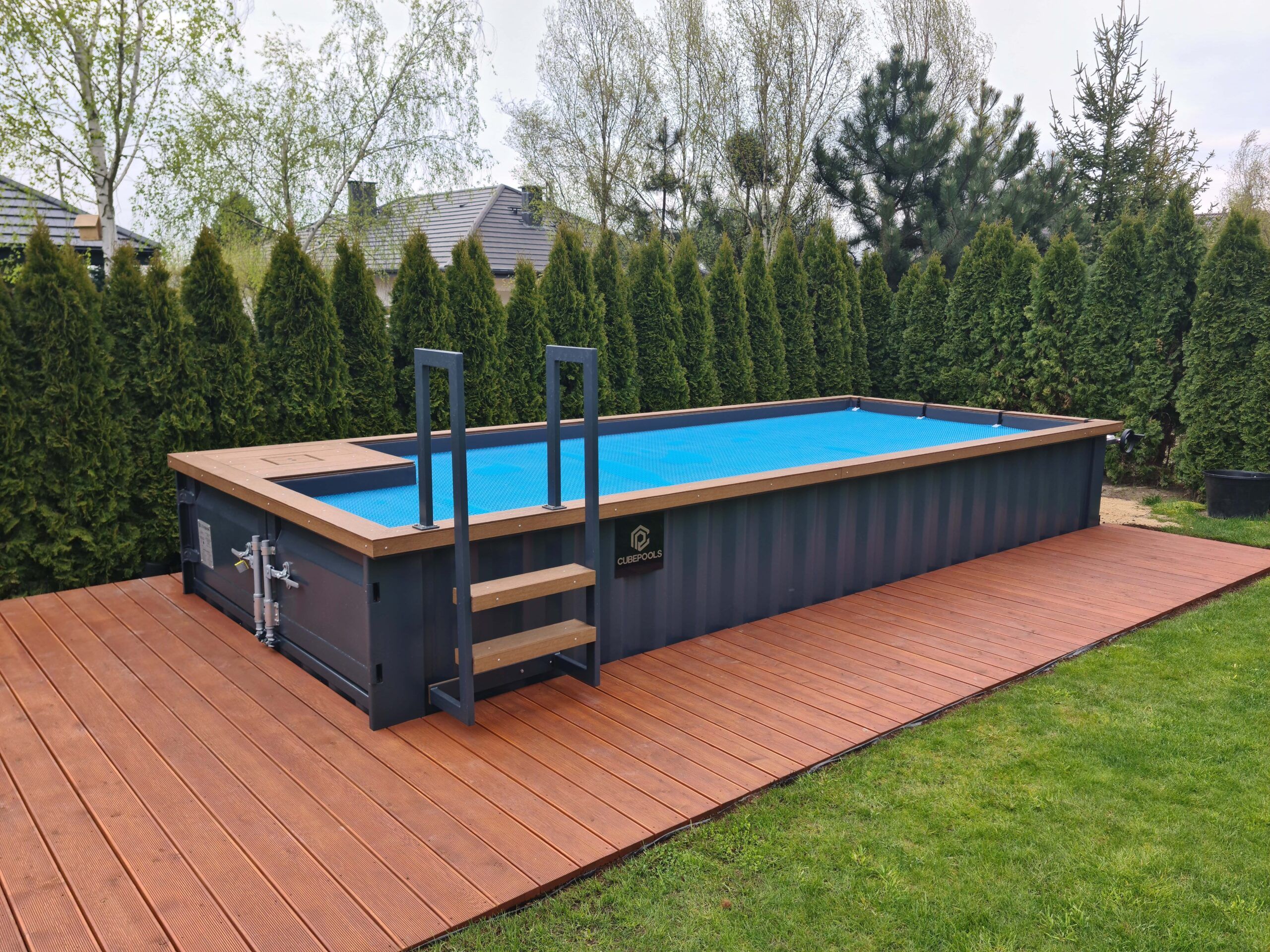
Container: seen or unseen
In the aforementioned Straddle3 projects, the use of the container is partially visible or not visible at all, while examples from other latitudes do show it as an decorative element.
What determines this?
"If it is used as a structural element, it has to be protected against fire. One way of doing this is to apply paints with a thicker coating of vermiculite, for example, but the most efficient way is to confine it within a wall cladding to optimise means," Juárez points out.
Structurally, the architect explains, it does not make sense to include additional support of beams or pillars to a material capable of supporting such heavy loads or even allowing more containers to be stacked on top of it to build multi-storey buildings.
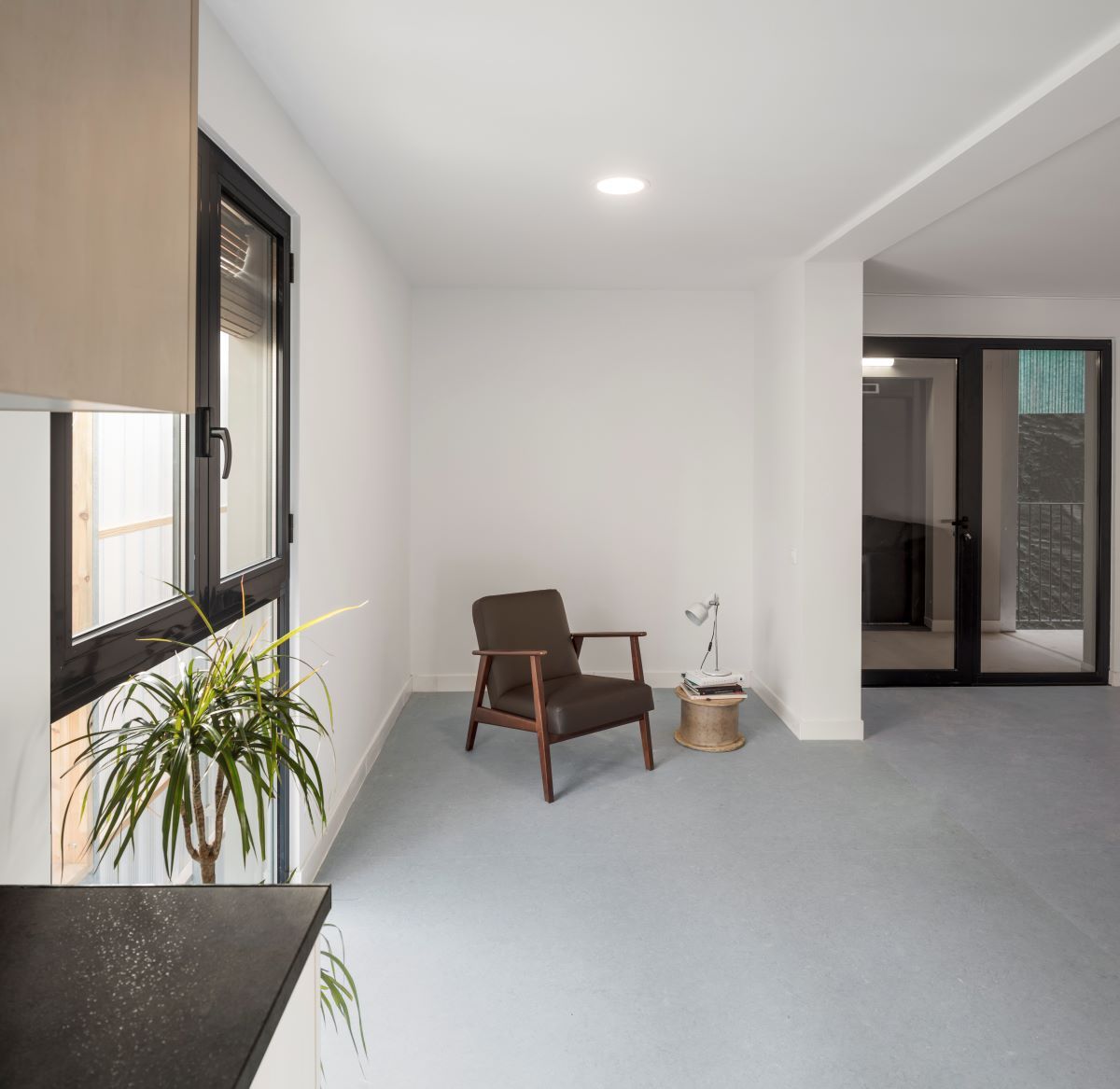
"In the Caldes project, as in others we have carried out, we have left several walls exposed, but this means giving up the structural advantages it offers and having to use other materials in the structure," he continues.
This is where the various international technical codes for fire protection and fire propagation measures come into play. Juárez says that some Lot-Ek projects, for example, would not meet the criteria, not only in Spain but also in Europe, but they do comply with US legislation.
There is now widespread interest in using the container for this purpose. In the case of Straddle3, it is a material that they often propose to their clients, but always in a context where it makes sense.
"Within the options that exist for dry construction and prefabricated systems, and without forgetting the environmental aspect, the container is another option, as is wood or other metal structures," he concludes.
It has been several decades since steel became the material of choice for American skyscrapers. Who knows if the container and its qualities will fill the architecture to come and, incidentally, give a second life to these boxes originally designed to transport goods around the world.



